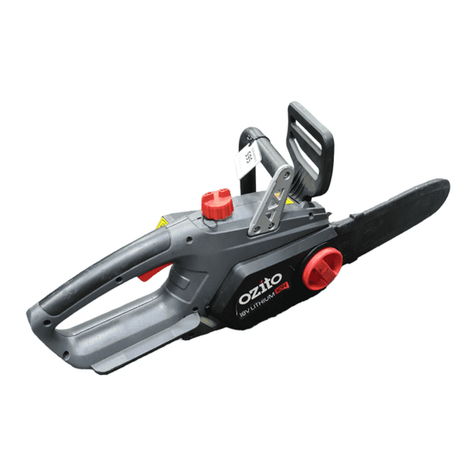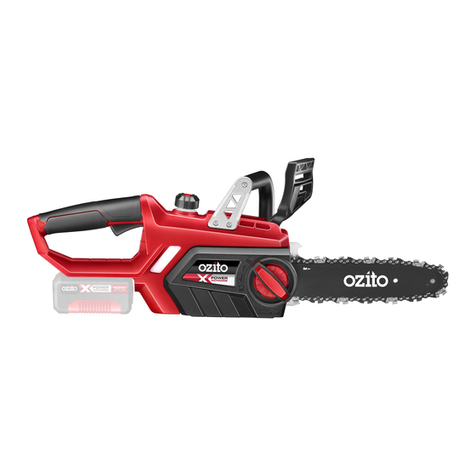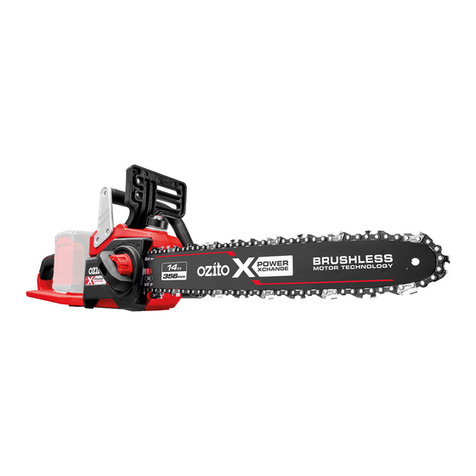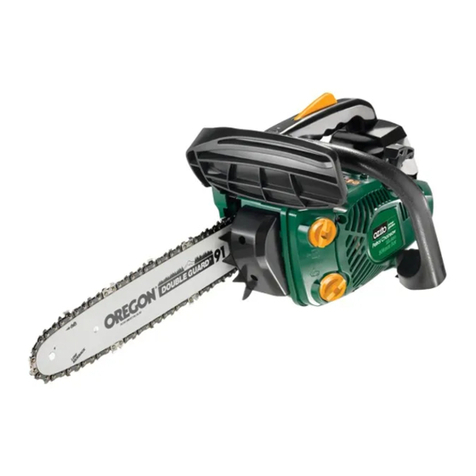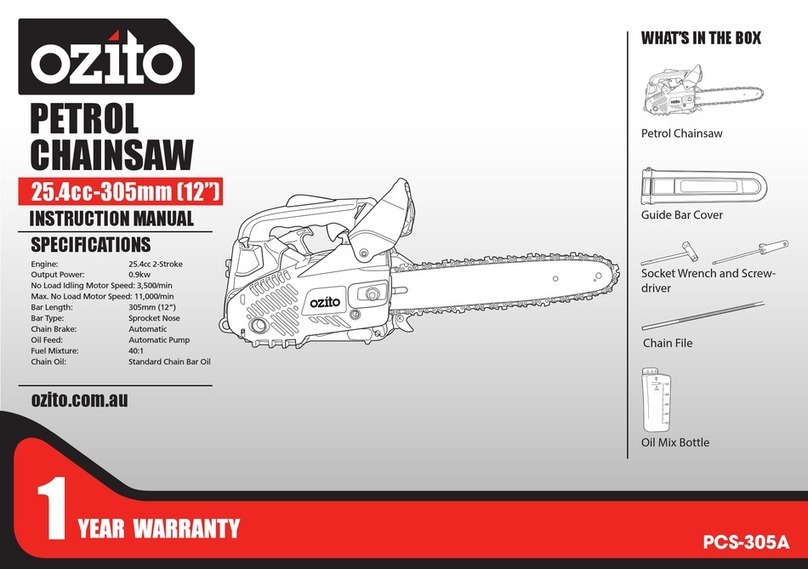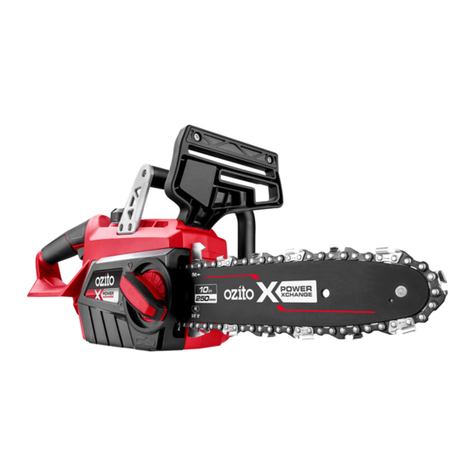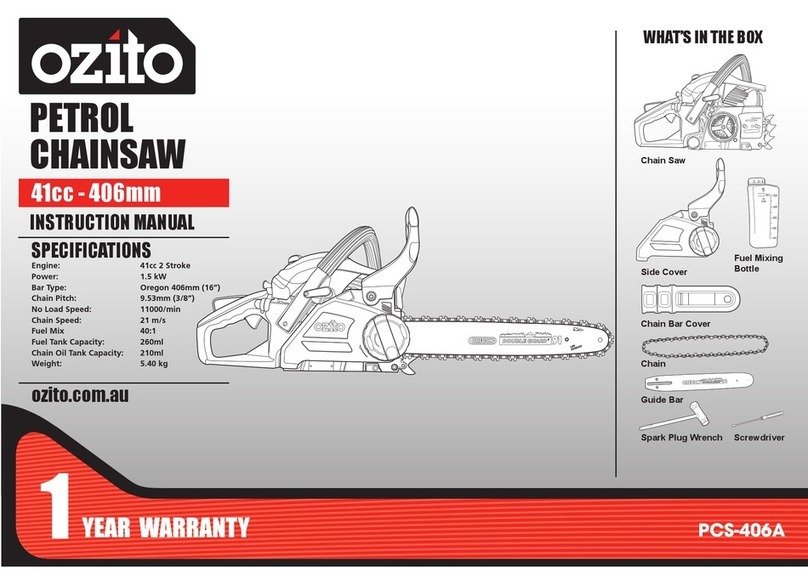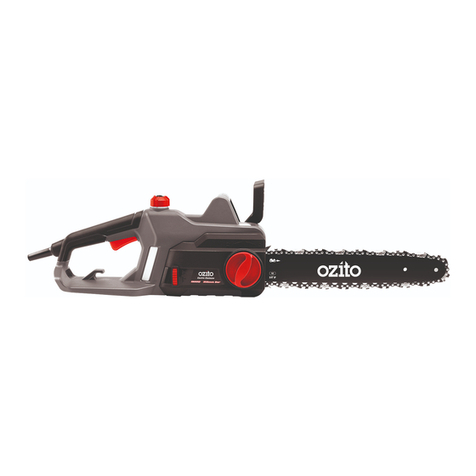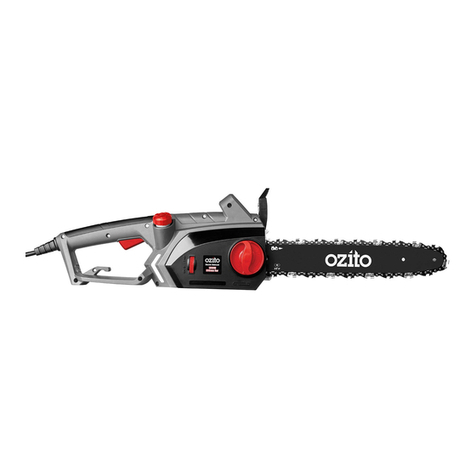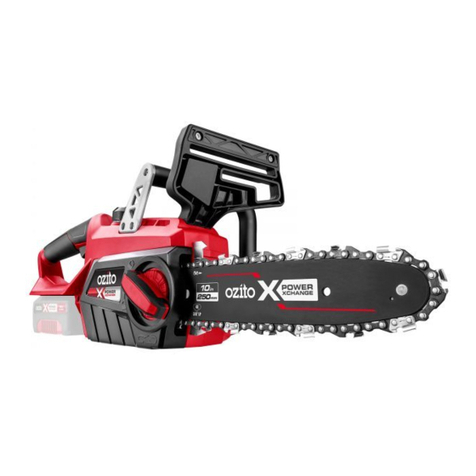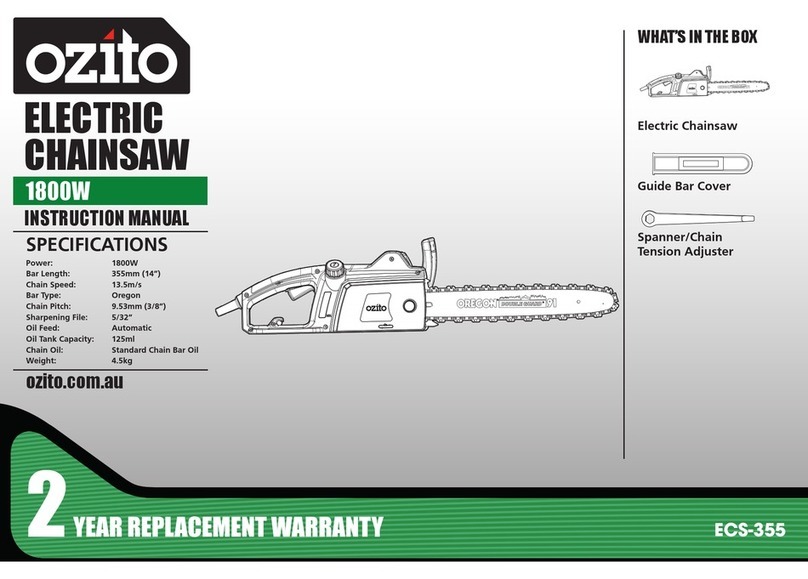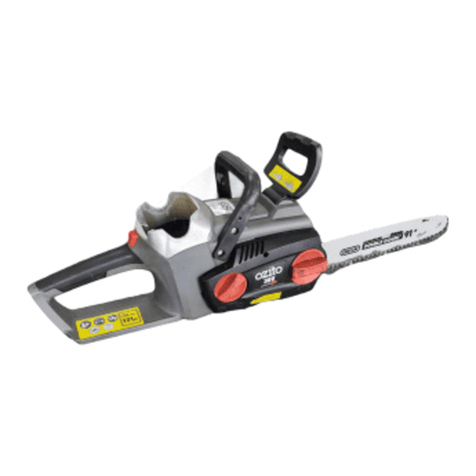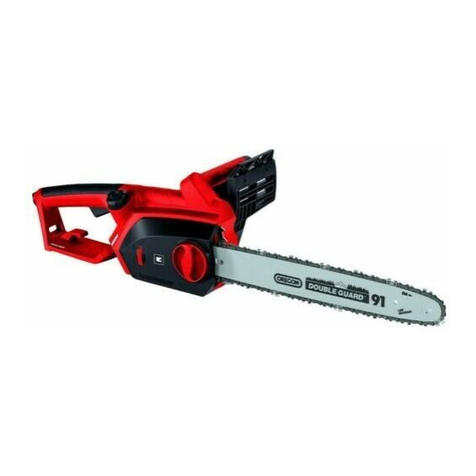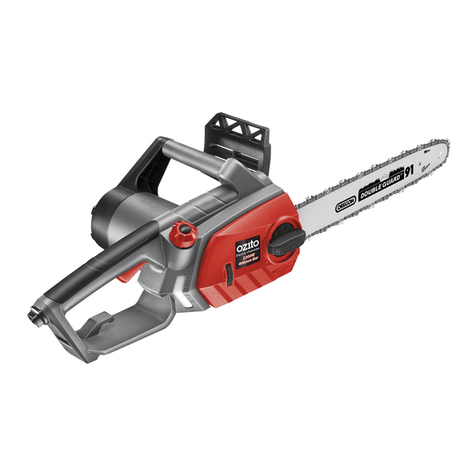7
ADDITIONAL SAFETY INSTRUCTIONS FOR CHAINSAWS
This appliance is not intended for use by persons (including children) with
reduced physical, sensory or mental capabilities, or lack of experience and
knowledge, unless they have been given supervision or instruction concerning use
of the appliance by a person responsible for their safety.
Recommendations for the use of a residual current device with a rated residual
current of 30mA or less.
• Keep all parts of the body away from the saw chain when the chain saw is
operating. Before you start the chain saw, make sure the saw chain is not
contacting anything. A moment of inattention while operating chain saws may
cause entanglement of your clothing or body with the saw chain.
• Always hold the chain saw with your right hand on the rear handle and your
left hand on the front handle. Holding the chain saw with a reversed hand
configuration increases the risk of personal injury and should never be done.
• Wear safety glasses and hearing protection. Further protective equipment
for head, hands, legs and feet is recommended. Adequate protective clothing
will reduce personal injury by flying debris or accidental contact with the saw chain.
• Do not operate a chain saw in a tree. Operation of a chain saw while up in a
tree may result in personal injury.
• Always keep proper footing and operate the chain saw only when standing
on fixed, secure and level surface. Slippery or unstable surfaces such as
ladders may cause a loss of balance or control of the chain saw.
• When cutting a limb that is under tension be alert for spring back. When
the tension in the wood fibres is released the spring loaded limb may strike the
operator and/or throw the chain saw out of control.
• Use extreme caution when cutting brush and saplings. The slender material
may catch the saw chain and be whipped toward you or pull you off balance.
• Carry the chain saw by the front handle with the chain saw switched off
and away from your body. When transporting or storing the chain saw
always fit the guide bar cover.Proper handling of the chain saw will reduce
the likelihood of accidental contact with the moving saw chain.
• Follow instructions for lubricating, chain tensioning and changing
accessories. Improperly tensioned or lubricated chain may either break or
increase the chance for kickback.
• Keep handles dry, clean, and free from oil and grease. Greasy, oily handles
are slippery causing loss of control.
• Cut wood only. Do not use chain saw for purposes not intended. For
example: do not use chain saw for cutting plastic, masonry or non-wood
building materials. Use of the chain saw for operations different than intended
could result in a hazardous situation.
Kickback
Kickback may occur when the nose or tip of the guide bar touches an object, or
when the wood closes in and pinches the saw chain in the cut.
Tip contact in some cases may cause a sudden reverse reaction, kicking the guide
bar up and back towards the operator.

